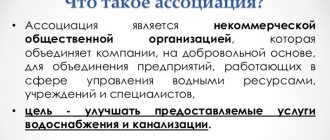Gestures of a confident person
– a set of gestures that characterize a confident person.
Gestures are movements of the body or its individual parts that have a specific meaning or purpose. Are you observant? Then we could have noticed more than once how our gestures betray us - gait, posture, posture. For people experienced in this matter, one glance at how a person behaves is enough to tell a lot about him. Excitement, embarrassment, the desire to “fall through the ground” - all this can easily be attributed to the nature of a person’s behavior. Surely many remember the problem “where to put your hands?” at some important moment, for example, giving a speech or defending a thesis. Meanwhile, many books have been written that talk about the gestures of confident people. You can learn it, but it’s unlikely to play it. Imitation is also well recognizable.
General characteristics of confidence
- We stand firmly on our feet. A self-confident person is a strong, centuries-old tree, rooted in the ground and firmly rooted. He does not stagger under the persistent gaze, does not sway and does not shift from foot to foot. He stands straight, with his feet usually shoulder-width apart.
- Gait. A firm and rhythmic step, wide and sweeping. Often accompanied by a swing of the arms. The body is slightly tilted forward. In general, he gives the impression of activity and energy. A person confidently moves forward in space, and his legs only help him. There is no place for running and waddling. Political leaders can serve as models.
- Posture. Remember how mom often said: “Don't slouch!”? How right she was. Slouching speaks of our tightness, drooping shoulders speak of lack of independence and apathy. A sign of inner confidence is straightened shoulders and tension-free arms. It is impossible to imitate such a posture. Muscle tension will be felt very quickly, and it will look quite unnatural, as if you were on a hanger.
Gestures of reflection and evaluation
Concentration
This emotion is expressed by pinching the bridge of the nose while the eyes are closed. When your interlocutor decides exactly how to act or what to do, so to speak, is thinking about solving a specific issue, you will notice that he is rubbing his chin.
Criticality
If a person has a negative assessment of what is happening, then he expresses his thoughts in the following position: one hand at the chin, the index finger extended along the cheek, and the other hand supporting the elbow. If his left eyebrow is also lowered, he is definitely internally criticizing you.
Positivity
The body of the interlocutor is tilted forward. The head is slightly tilted forward, and the hand lightly touches the cheek. If you observe such a picture, there is a person in front of you who is interested in what is happening, in what you say or do, and has a positive attitude towards information.
Gestures of confidence
- Handshake. Are your palms sweating from fear? Test failed. The palm of a confident person is dry and warm. The handshake is strong and inviting. If a person is ready to dominate, then most likely his hand will be on top; if he is inclined to play second roles, then he will turn his hand palm up.
- Spire gesture. Often used by presidents and executives in the upper echelons of government. This is the position of the hands in the form of the roof of a house, when the fingertips of both hands are closed. This gesture speaks of a person’s clear position.
- Openness. Common habits are crossing your legs or arms. This is a subconscious protection from the world. A sign of confidence is open postures. Hands on the armrests or knees are free, hand gestures are directed towards the interlocutor with open palms, legs in any position without crossing.
- Eyes to eyes. From childhood we know that anyone who looks away is a liar. A self-confident person looks calmly into the eyes of his interlocutor. Of course, throughout the conversation, especially if it dragged on, it would be torture. But more than half the conversation is perfectly acceptable.
- Thumbs. If a person often demonstrates his thumbs, raising them above the rest of his fingers when gesturing in a conversation, leaving them sticking out of his trouser pocket, he emphasizes his confidence and even some superiority over others. True, there is a fine line with arrogance.
- Hands behind the head. The gesture is popular. It shows a person’s confidence in himself, his position, his competence. As a rule, in this position a person is in a good mood.
- A slight smile. We're not talking about the smile in a toothpaste commercial. This is a slight smile only with the lips. In this case, the eyes will also play a role. The overall impression is that you are difficult to unsettle and your confidence seems to be reinforced.
- Distance. Both in dance and in conversation, a confident person is not afraid to be closer to his partner. However, it is worth remembering that everyone has their own comfort zone, and crossing it is considered bad manners.
We carefully hide our weaknesses. Although the body will tell many of our secrets. For body language to become our ally, take a closer look at yourself and understand what you need to work on.
Poses of uncertainty and doubt
Uncertainty
Non-verbal communication, which is accompanied by gestures such as scratching or rubbing the back of the ear or neck in most cases, means that the person does not quite understand what you mean or what exactly is required of him.
If at the same time a person assures you that he fully understands, be sure that he is deceiving you. Nonverbal gestures gave him away: he didn’t understand anything.
Mistrust
Disagreement with someone's opinion is revealed by covering your mouth with your hand. The person seems to be holding back from appositional statements and suppressing true feelings. If your friend unexpectedly made such a gesture of distrust in a conversation, it is better to stop and think about what words provoked such a reaction, and correct the delicate situation. By observing your boss's behavior and noticing similar reactions in him, you will easily understand what you should talk about and what it is better to remain silent about. This is very important, because distrust can quickly turn into a stage of non-acceptance, and then into a categorical refusal.
If such nonverbal gestures accompany the interlocutor’s story, he is probably lying or significantly understating the story.
Gestures indicating reluctance to listen and communicate
Boredom
When the interlocutor props his head with his hand, this indicates complete indifference to what is happening. He's not interested, he literally falls asleep.
If you notice such a reaction from your interlocutor, immediately change the topic of conversation: choose something that worries him for discussion, or talk about him - this is a win-win option. You can also “shake up” your interlocutor with an unexpected question - he will wake up immediately, rest assured.
Disapproval
A sure signal of disapproval of what is happening and disagreement with the stated point of view is shaking off non-existent lint from your clothes, pulling down your skirt, straightening out folds, etc.
When you notice this, simply switch to neutral topics, less heated questions, or a calmer tone. However, the gesture should not be regarded as disapproval if a thread actually stuck to the sleeve of the interlocutor’s jacket or the clothes were wrinkled.
Willingness to leave
If a person lowers his eyelids and closes his eyes, he has lost interest in the conversation. Scratching your ear while listening to a story symbolizes fencing off the flow of speech; perhaps the interlocutor suspects you of lying and does not want to listen to it anymore. Stretching your earlobe will tell you that your opponent does not want to speak out. When the interlocutor turns his entire body in the direction of the exit or simply points his feet with his toes towards the door, the conversation is over, the person can’t wait to leave. A gesture in the form of removing glasses is also an eloquent signal of the end of the conversation.
Irritation
The cause of irritation can be anything, but the most striking nonverbal gestures are accompanied by irritation that the interlocutor has seen through his obvious lie. He will be angry that you are right, but showing your irritation will be a final defeat. Therefore, a person will internally “boil”, which means he will feel a lack of air, the need to cool down - he will begin to involuntarily loosen his tie or collar, and rub his neck.
Among other things, irritation is characterized by unnecessary hand movements, a woman pinching her purse, mechanical drawing on paper, senseless rearrangement of papers on the table, and moving objects. The man longs to end this unpleasant conversation.
Confidence elevated to authoritarianism
In order to make a truly menacing, overwhelming impression, in order to inspire awe in those around you, it is enough:
- straighten your back;
- join your hands behind your back;
- raise your chin.
It is not difficult to imitate such a pose, but it is often much better demonstrated by people vested with power or special powers. These are police officers, security guards, low-level army commanders who “edify” recruits, military instructors, leaders of the highest social rank, customs officials, etc.
It is possible to feel confident and begin to radiate that confidence. Just a few minutes, and you already feel great at an interview, negotiation or before a public speaking. In NLP this is called “entering a resource state.”
- Do you often feel unsure of yourself and your abilities?
- Are you a generally strong and purposeful person, but before a difficult conversation, speech or date do you lose strength and will?
- Are you confident that you are right, but cannot convince others?
Almost all of us have experienced one or more of these conditions. Meanwhile, achieving success, self-confidence, and convincing others can be controlled.
Scientists have explained this phenomenon from a scientific point of view. It is no secret that the body and mind are a single system, between which there is direct and feedback. Observing animals, it is easy to notice that if they need to demonstrate their strength, they increase in size. Sometimes physically, like a balloon fish, puffing up. In dogs and cats, the hair stands on end and the back arches. Birds spread their wings and tail. This is the so-called dominant pose.
A winning pose will help.
Man does exactly the same. There is even such a term - “victor’s pose” or “power pose”: shoulders back, head raised, arms extended up or to the sides. It is enough to remember how the winner crosses the finish line or how the champion rejoices. Broad gestures, chest forward, glance slightly upward. Interestingly, people who are blind from birth, unable to see the pose to copy, act in a similar way. This is a natural, unconscious posture of success.
Scientists from Pennsylvania have found out what happens to a person if they spend a few minutes in a winning position. It turned out that spending two minutes in this position significantly changes the ratio of testosterone and cortisol. That is, changes occur at the hormonal level. The body is rebuilt into a “fighting form”. Amy Cuddy, a social psychologist from the USA, talks about this interestingly.
A natural question arises: shouldn’t you sit slumped during an interview, resting your elbow on the back of the next chair? By the way, this is a classic resource pose, but more on that below. It is uncomfortable to participate in negotiations with your hands up and your chest out. It is not customary for us to put our feet on the table.
You shouldn’t take this literally—nothing like that is required. It is quite enough to enter this state immediately before negotiations or interviews. The elementary inertia of our body will work. Confidence will continue automatically.
Psychologists have calculated that a person perceives the “present” as 3–4 seconds of time. It is during these seconds that the first, most lasting idea of a new person is formed. This is enough to make the right impression. Then the body acts by inertia. Hormonal levels do not change instantly. Negotiations, performances, rendezvous have already begun, the pre-start excitement is over. It's much easier to continue.
How to enter the resource state of a winner
It makes sense to practice in advance to feel this state.
- Try, preferably without witnesses, to straighten your shoulders, stretch up, smile, slightly raise your chin and stay in this position for only 5-6 seconds.
- Walk around the room with a decisive step, confidently, looking around the space in a possessive manner.
- Sit in a chair or on a sofa, lounging as impressively as possible. Look around with a confident look. You can put your hands behind your head, cross your fingers and straighten your elbows.
- Stand up decisively and, with your arms akimbo, shoulders back, chest forward, look at something on the ceiling or at the top of the wall.
- Say something very loudly, confidently. It’s best to joke, to make fun of yourself. Wish yourself well, victory. Remember that animals in a dominant position often make loud noises.
You can come up with a dozen more such confident poses. The Internet is full of pictures capturing moments of victory. Select the poses you like and copy.
Each pose should be held lightly for a few seconds, then move on to the next. Consistently changing resource poses, practice for a total of two minutes. During this time, you will not only feel more confident, but will feel a surge of strength and energy. Your mood and well-being will change, and you may even experience slight, pleasant physical fatigue. Feel and remember this state - your personal resource state.
Warm up before a date
Before a rendezvous, negotiations or interview, give yourself a short useful break. In sports there is such a thing as a warm-up, for artists - the mood before a performance, the mood to win. This is entering a resource state.
Take just a couple of minutes to warm up.
- Free your hands from any objects. Handbag, briefcase, phone, papers, handkerchief... Don't hold one hand with the other. Give your hands freedom. Let them fill as much space as possible.
- Walk down the corridor with a decisive, quick step.
— In the toilet, if you find yourself alone there, “scare” your reflection with an ironic grimace. Stretch up and to the sides, stretching your arms up as far as possible.
— Sitting in an armchair or on a chair, straighten your shoulders, lean back a little and consider the connection between the ceiling and the wall or the fastening of the curtains.
— Go to the window and look at the sky. Consider the shape of the clouds, evaluate the blueness of the sky or the strength of the clouds. Just don't look down at the ground. Look straight ahead and up.
There are a lot of such poses, open and making you appear larger in space. If you take the time to practice in advance, you can easily select the most suitable ones in each specific case.
It is important to constantly be in one of the resource poses. Then, at the beginning of negotiations or interviews, you will take the most optimal position.
Little trick
It is not very important to our consciousness whether an event really occurs or whether we just imagine it. Reactions to real and imaginary events are the same, the only difference is the strength of emotions. For example, how often we are afraid not of a really happening event, but of fantasies about the future. Our ideas affect our hormonal levels in the same way as real events. You can use this, manage your condition, sensations, feelings. This is apparently where the expression “thought is material” came from, the nature of self-hypnosis.
When you are not able to act physically (you are going to a meeting on the subway, bus, or your own car), you can simply imagine yourself in the pose of a winner. The brighter the better. Pay attention to the colors in the image, lighting, interior. Add sound and dynamics to the image. Don't skimp on your imagination, for your own sake. Hypnotic techniques also work in self-hypnosis.
These simple and very effective exercises will allow you to significantly increase your self-confidence, self-esteem and personal effectiveness.
From the editor
More than twenty basic principles that allow you to gain confidence, fame, wealth and love are described in the book “Self-esteem as a woman. Become a confident woman” Irina Udilova and Anton Ustavalov. This guide is for those for whom it is important to learn to love themselves, please others, communicate easily and enjoy life: .
No one can completely avoid stressful situations in the modern world. How to navigate such situations and transform them, eliminating or minimizing possible damage, explains expert on corporate culture and ethics Konstantin Barezhev :
We often behave irrationally in a stressful situation; fear does not give us the opportunity to make the right choice and limits us. He guides us and prevents us from realizing that our choice is dictated not by the interests of the case, but by emotions. Psychologist and business coach Olga Yurkovskaya suggests doing exercises that will help you get rid of deep-seated, sometimes unconscious fears and become freer: .









